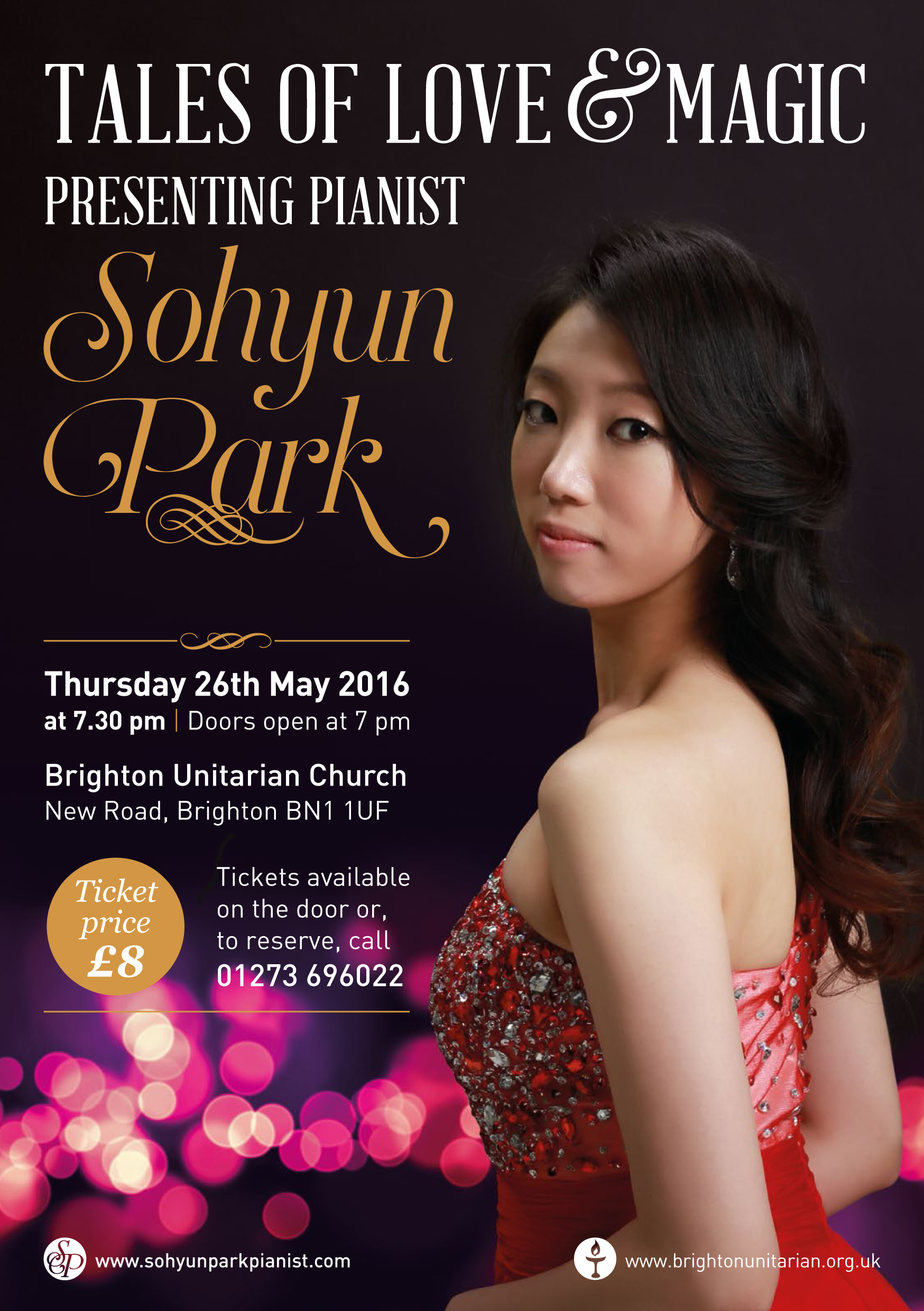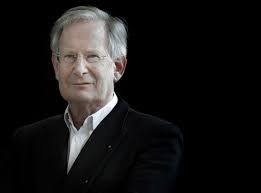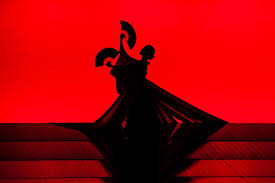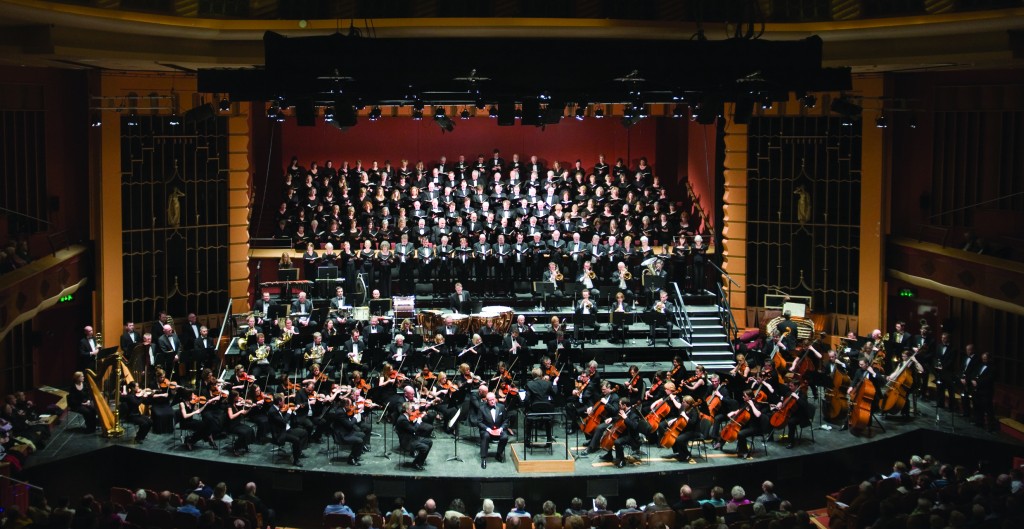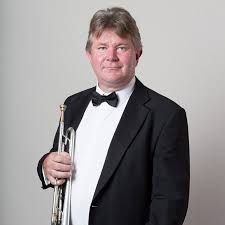Monthly Archives: March 2016
Bach: St Matthew Passion
Barbican Hall, Saturday 26 March 2016
Sir John Eliot Gardiner asks a lot of his musicians – and equally so of his audience. The singers perform without scores and the many solo instrumentalists perform from memory. The effect is one of immediacy and intense dramatic impact. When this is united with the immaculate beauty of line, the intimacy of so many of the solo arias, and the rapport of all concerned, the impact is frequently overwhelming. I can’t recall a St Matthew Passion where the words have seemed quite so important, driving the text and insisting we follow the narrative. There was never a moment when we simply relaxed into beautiful singing, though that itself was never in doubt.
In the programme note John Eliot Gardiner makes a strong case for his approach, which avoids the pitfalls of a ‘staged’ event and the often sterile impact of a concert. Instead we have soloists who move easily about the stage to find their place to address us directly. They make eye contact with the instrumentalists and with the audience. In the final choruses, both Evangelist and Christus join the chorus, and throughout, the solo voices have come out of the chorus and returned to it.
There is a sense that the music really is more important than those who are performing it, though I doubt we could find a finer performance anywhere today.
Mark Padmore brings an urgency to the Evangelist which involves us throughout and is finely contrasted to Stephan Loges humane Christus. Trinity Boys Choirs may not have a lot to do – they rightly left the stage for much of the time – but their surprisingly continental sound brings unexpected authority to their choruses. The sudden changes in dynamic make for a thrilling choral sound from the Monteverdi Choir, and the English Baroque Soloists are just that – a collection of expert individual players who come together to be more than the sum of their parts.
There was a standing ovation at the end. I’m not normally keen on this type of emotional outburst but on this occasion it was certainly justified.
My First Ballet: Sleeping Beauty
 English National Ballet and English National Ballet School have, in recent years, developed an interesting way of offering a real experience of classical ballet to children as young as three. Students from ENBS dance an abridged version of an ENB show – carefully choreographed for young dancers by George Williamson with Dramaturgy by Adam Peck. A narrator – in this case Saskia Portway – is woven into the action to make the story absolutely clear to the audience. Having opened at Peacock Theatre in London, My First Sleeping Beauty tours until the end of May. It provides valuable experience for young performers at the very beginning of their careers and lots of opportunities for families to experience ballet, possibly for the first time.
English National Ballet and English National Ballet School have, in recent years, developed an interesting way of offering a real experience of classical ballet to children as young as three. Students from ENBS dance an abridged version of an ENB show – carefully choreographed for young dancers by George Williamson with Dramaturgy by Adam Peck. A narrator – in this case Saskia Portway – is woven into the action to make the story absolutely clear to the audience. Having opened at Peacock Theatre in London, My First Sleeping Beauty tours until the end of May. It provides valuable experience for young performers at the very beginning of their careers and lots of opportunities for families to experience ballet, possibly for the first time.
Tchaikovsky’s lush melodious score is well enough played by City of Prague Philharmonic conducted by Gavin Sutherland and Daryl Griffith although it must be much harder to dance in sync when you’re working to a recording without a conductor to watch – and some of the cuts are a bit abrupt. The young dancers do well in general although their youth shows occasionally in a strained wobble or two. Especially enjoyable are the set pieces by the benign fairies in the first act, the prince’s show piece dance in the enchanted wood and the series of dances by the fairy tale characters with a particularly witty contribution by two dancers as a pair of cats. And at the end Aurora and the Prince are suitably appealing and impressive in their final romantic pas de deux. The company of 25 – ENBS students are recruited from all over the world – rotate the principal and corps de ballet roles and no one is named in the programme other than as a member of the ensemble.
I have, as with previous shows in this series, some reservations about the narration. Saskia Portway, who co-wrote her own script, plays the older Aurora looking back on her youth sometimes wandering through the action and sometimes standing to the side. Her voice is warm although it sometimes strays dangerously close to the sanctimonious sugariness of Vanessa Redgrave in the TV series Call the Midwife. Moreover she struggles to be heard when the music is rising to one of Tchaikovsky’s magnificent dramatic crescendi. It is more effective at quieter moments when she speaks in rhythm with the music. Why though, at points when the dance makes it completely clear what is happening do we need words at all? When the Queen is counting, for example, it really doesn’t need to be spelt out by a narrator.
On the whole, though, the “My First” concept works. I saw My First Sleeping Beauty with hundreds of children and almost every one of them was totally engrossed for the full 90 minutes and that’s a terrific achievement for cast and creators. I regret though that the vast majority of them are little girls. Why on earth don’t people take boys to ballet as well?
Susan Elkin
Anthony Minghella’s Madam Butterfly returns to ENO
Opens Monday 16 May at 7.30pm at London Coliseum for 17 performances
Described by The Times as ‘one of the most deeply thoughtful and ravishingly beautiful re-creations of Puccini’s opera that you’re ever likely to see’ Anthony Minghella’s stunning production of Madam Butterfly returns to ENO for its sixth revival.
This is the first and only opera directed by the late Anthony Minghella and his wife Carolyn Choa, who assisted him as choreographer and associate director. Best known for his work in film, Minghella won an Oscar for his film The English Patient and a BAFTA for The Talented Mr Ripley.
Madam Butterfly is one of opera’s most enduring tales of unrequited love. With its breathtaking mix of cinematic images, traditional Japanese theatre, colourful costumes and stunning sets, Anthony Minghella’s Oliver Award-winning production has been hailed as’ The most beautiful show of the year’ (Sunday Telegraph).
The original creative team consists of set designer Michael Levine, award-winning lighting designer Peter Mumford and fashion designer Han Feng, whose costumes for the opera launched Feng’s career in costume design.
Acclaimed British conductor Sir Richard Armstrong conducts his first Puccini opera for ENO. Formerly Music Director of Welsh National Opera and Scottish Opera, his recent appearances at the London Coliseum include five star productions of both The Passenger (2011) and The Makropulos Case (2010) and the revival of Calixto Bieito’s Carmen (2015).
Soprano Rena Harms returns to ENO to make her role debut as Cio-Cio San. She previously performed the role of Amelia in Dmitri Tcherniakov’s production of Simon Boccanegra for the Company in 2011.
British tenor David Butt Philip makes his role debut as F.B. Pinkerton. He was last seen at ENO as Rodolfo in Jonathan Miller’s production of La bohème in 2014, with The Guardian commenting on his performance that he was ‘a Rodolfo to treasure’.
ENO Harewood Artists Matthew Durkan and Samantha Price make their debuts in the roles of Prince Yamadori and Kate Pinkerton respectively.
Reprising their roles are Harewood Artist George von Bergen as Sharpless, Pamela Helen Stephen as Suzuki, Alan Rhys Jenkins as Goro and Mark Richardson as The Bonze
Mark Wigglesworth to step down as Music Director at the end of 2015/16 Season
The following has been released from ENO:-
We regret to confirm that Mark Wigglesworth feels unable to continue as Music Director despite the best efforts of the Board and Senior Management to persuade him to remain. We are disappointed that he will not be staying to lead the artistic forces through this particularly challenging period.
Mark has agreed to complete this season as Music Director including conducting Jenufa and to return as a guest conductor for two scheduled productions in the 2016/17 season. Mark is a world class conductor and we look forward to welcoming him back as guest conductor in future years.
–ends–
Brighton Philharmonic Orchestra
The Dome, Brighton, Sunday 20 March 2016
What a glorious conclusion to a very fine season which, I think, has also brought increasingly large audiences. Vaughan Williams’ A Sea Symphony is the sort of masterpiece which brings out the best in all involved. Brighton Festival Chorus have the salt air in their veins of course but their enthusiasm and accuracy were a delight to behold. From the opening onslaught of sound to the dying fall we were immersed in wave upon wave of glorious tone. Soprano Elin Pritchard was able to ride the combined might of the orchestra and chorus with ease, producing thrilling sounds and great beauty of line. If baritone Nicholas Lester did not make quite the same impact, his refined singing impressed though the words tended to get lost in the melos. The orchestra was as fine as I can recall it all season, with tonal nuances wafting easily as the mood changes swiftly from introspective to ecstatic.
Barry Wordsworth was in his element – so much so that at one point he let slip his baton which was deftly rescued by the soloists.
A wonderful conclusion – though readers will want to know about the first half of the programme. Would that this had been as fulfilling. William Alwyn’s Overture: Derby Day has colour and excitement but rather left this listener standing at the post. The narrative line was difficult to follow and it seemed to go on and then stop. I am sure others will argue there is more to the work than this but on a single hearing it was not obvious.
Bernstein’s Second Symphony The Age of Anxiety draws on W H Auden’s poem as its point of inspiration but unfortunately this was not printed in the programme (as neither were the Walt Whitman verses for the Sea Symphony) and we were rather left to guess at the underlying creative spark. The work has a plaintively haunting opening for two clarinets but as the movements run into each other it is difficult to follow the narrative line. There is a fine extrovert jazz section and a great deal for the solo pianist, Rob Clark, to do, though this is definitely not a piano concerto. Did the programming work? I remain unconvinced and it was only the overwhelming impact of the Vaughan Williams that made for such a successful conclusion.
I am delighted to note that next season starts on Sunday 9th October 2016 – of course you will be there!
Maidstone Symphony Orchestra
Mote Hall, Maidstone, 19 March 2016
In his introduction Brian Wright noted that the concert was book-ended by Adagios. While this was technically true the difference between the two could hardly have been greater. The evening opened with the lush warmth of Barber’s Adagio for Strings which brought richness without ever becoming over romantic. Precise intonation was a harbinger of excellence to come.
As if to give us a little light relief Paul Beniston joined the orchestra as the soloist in Arutiunian’s Trumpet Concerto. I have to admit that in all my years as a music critic this was the first time I had heard the work and it certainly sparkles with a mischievous intensity. While there are hints of Shostakovich in the astringency of much of the writing it also has the romantic washes of sound and colour we associate with Rimsky-Korsakov or Khachaturian. It is not afraid of melody either, and so lies easy on the ear even at a first hearing. Paul Beniston was obviously enjoying himself and his enthusiasm was catching not only for the audience but the soloists in the orchestra, with some particularly fine solo passages for clarinet.
Mahler’s Ninth Symphony is an Everest for the finest orchestras in the world. For Maidstone to tackle it may seem like foolishness but the attempt paid off with many passages of splendid authority. If the opening of the first movement seemed tentative, the first climax galvanised the large forces and brought a thrilling intensity which set a mark for the rest of the performance. The brass produced the raw power Mahler calls for, the first trumpet piercing the hall with its ringing steel. The hushed intimacy of the many bridge passages impressed as the structure gradually unfolded.
The rustic opening of the second movement seemed unusually slow but gathered in pace as the score progressed. Balance in this movement was cleaner than it had been in the first and there was a crispness to the sound which added to the impact. The woodwind rasped its way through the third movement as the score moves towards a chaos which is not easy on the listener but an essential part of the journey. The movement built to a splendid climactic crisis before the gentler pace of the final Adagio. Here we found warmth and steadfastness with a courage to endure. The acid world of shrieking wind and brass are gone and in the magical final pages we sense a striving for a conclusion which remains ever elusive – it recalls the end of Das Lied von der Erde, a fade into oblivion.
Brian Wright was either inspired or close to insane putting the work in this year’s programme but in the event proved that, for all the challenges, it was worth the effort. Players may have been stretched to the limit yet proved themselves more than capable of overcoming the rigours of Mahler’s writing to produce a memorable and moving performance.
ENO’s new Tristan and Isolde
World-famous sculptor Anish Kapoor joins director Daniel Kramer and conductor Edward Gardner for a new production of Wagner’s epic Tristan and Isolde
World-famous sculptor Anish Kapoor will design the sets for ENO’s unmissable new production of Tristan and Isolde. Directed by Daniel Kramer and conducted by former ENO Music Director Edward Gardner, Tristan and Isolde is one of the most hotly-anticipated arts events of 2016.
An epic drama told on a grand scale, Tristan and Isolde is one of the most powerful pieces in the repertoire. Described by Richard Wagner as ‘the most audacious and original work of my life’, the opera retells the legend of Tristan and Isolde’s transcendent but ill-fated love.
ENO’s first new production of Tristan and Isolde since 1996 is directed by ‘theatre’s most exciting young director’ (Daily Telegraph) Daniel Kramer. His previous work with ENO and Edward Gardner includes Duke Bluebeard’s Castle (2009) and Punch and Judy at the Young Vic (2008), for which he won the South Bank Show Award for Outstanding Achievement in Opera. Kramer was also nominated for the Golden Mask award for Best Director for Duke Bluebeard’s Castle when it was performed at the Bolshoi Theatre, Moscow.
For this spectacular staging Kramer collaborates with Anish Kapoor, one of the most influential sculptors of his generation. Winner of the Turner Prize in 1991, he was awarded a CBE in 2003 and a Knighthood in 2013 for services to visual arts. He designed the ArcelorMittal Orbit, Britain’s largest piece of public art, which was constructed in the Queen Elizabeth Olympic Park to stand as a permanent legacy of the London 2012 Olympic Games. Kapoor has also designed stage sets that include Idomeneo for Glyndebourne in 2003 and Pelléas et Mélisande for La Monnaie in Brussels in 2008.
This thrilling score is conducted for the first time by former ENO Music Director Edward Gardner. Following his performances of Richard Jones’s Olivier Award-winning, five-star production of The Mastersingers of Nuremberg (2015), The Stage wrote that his ‘immaculate sense of balance and flow denotes a great Wagner conductor’.
The creative team is completed by Costume Designer Christina Cunningham, Lighting Designer Peter Mumford and Video Designer Frieder Weiss.
Tristan and Isolde opens at the London Coliseum on 9 June 2016 for 8 performances – June 9, 15, 22, 29 at 5pm and June 19, 26 & July 2, 9 at 3pm
Pre-performance talk: 19 June, 1.15-2pm, £5/£2.50 concs
ENO reaches a settlement with Equity
English National Opera can confirm that a deal to change ENO chorus contracts has been reached with Equity.
The settlement will see the ENO Chorus move to a nine-month contract to reflect the length of future seasons at the London Coliseum. These contracts will run from August – April (inclusive). During the months of May – July, when the company performs outside of its home venue, ENO Chorus members will be offered work on a first refusal basis. The Chorus will reduce in number for 44 members to 40 from August 2016. The new chorus pay package will come into effect from 1 August 2017.
Cressida Pollock, Chief Executive of ENO, said, “I am delighted that we have been able to reach a deal with Equity. We recognise the fundamental importance of the ENO Chorus in delivering world-class opera. We listened to the concerns of the Chorus and have reached a fair compromise that preserves the permanent ensemble, focussing on our London Coliseum season, whilst ensuring that we have the building blocks in place to increase our outside work. This settlement will contribute to the wider changes in our business model, to ensure that ENO becomes a more financially resilient organisation, able to move forward on a reduced public subsidy.”
Harry Brunjes, Chairman of ENO, commented, “On behalf of the ENO Board I would like to thank Cressida and the ENO Chorus for their hard work in reaching this compromise. We are now looking forward to the future, and to working together to ensure that our great organisation thrives for decades to come.”
CDs/DVDs March 2016
J S BACH – THE ORGELBUCHLEIN
JAMES LANCELOT, organ of Durham Cathedral
PRIORY PRCD1139
This is a very welcome release. A stand-alone no-frills rendition of the complete organ music from the book presented in order from Advent to Pentecost and concluding with the non-seasonal items.
This is a useful reference work but also a very enjoyable listening experience with James Lancelot in fine form at the Durham organ.
THE COMPLETE ORGAN SONATAS OF AUGUST RITTER (1811-1885)
MICHAEL HARRIS, Ladegast organ, Kirche Altleisnig, Polditz, Germany
PRIORY PRCD1162
The four organ sonatas presented here are of great interest, partly because of the early date of their writing and also because they are mostly unfamiliar to us now. Michael Harris gives fine performances on an organ that is itself an interesting survivor, built in 1868 and now restored, after it was very nearly removed in the 1980s.
ORGAN SPECTACULAR!
ASHLEY GROTE, organ of Norwich Cathedral
PRIORY PRCD1153
I have to confess that I groaned when I saw the contents of this disc, being mostly very well-known items in the organ repertoire. However, I must say, though, that I thoroughly enjoyed the whole CD and was reminded of just how enjoyable many of these pieces are. This CD would make an excellent introduction to the organ but will also be enjoyed by many “old hands” if they are prepared to put prejudice aside and give it a spin! The programme begins with Bach’s Toccata & Fugue in D minor & closes with Widor’s Toccata. The complete Gothique Suite by Boellmann is included. As well as Lefebure-Wely’s Sortie in E flat there is his lesser-known Andante: Choeur des voix humaines. A welcome new piece is the organist’s own Prelude on Cross of Jesus.
GREAT EUROPEAN ORGANS No 98
ANTHONY HAMMOND, organ of L’Eglise St-Vincent, Roquevaire, France
PRIORY PRCD1156
Sadly this long running series is nearing it’s end. In the meantime we have another release which combines expert playing on a lesser-known organ with interesting modern repertoire. Largely focussing on the art of improvisation this CD has compositions by Naji Hakim and Pierre Cochereau, together with works dedicated to him by Jean Bouvard & Daniel Roth. There is also the organist’s own Improvisation:Triptyque and Marius Monnikendam’s Toccate Concertante. Excellent!
THE COMPLETE PSALMS OF DAVID SERIES 2, Vol 9
Choir of SALISBURY CATHEDRAL, directed by David Halls with John Challenger, organ
PRIORY PRCD 1150
Moving to the choral repertoire we have another series nearing its end. Whilst not having quite the impact on me that the original series did I have been enjoying these releases as they bring further renditions of this staple of the cathedral repertoire, often with unfamiliar chants. Here the Salisbury choir demonstrates its familiarity with this genre in what is a well executed set.
GREGORIAN CHANT – MUSIC OF PARADISE
Choir of BUCKFAST ABBEY, directed by Philip Arkwright
PRIORY PRCD1151
There is little than I can say to add to descriptions of the beauty of Gregorian chant. Its simplicity and longevity both help to transport the singer and the listener beyond themselves. I really enjoyed this sequence of chant from the mixed voices here give a glimpse of the musical traditions still in place at the abbey. Sublime.
MESSIAEN – L’ASCENSION
TOM WINPENNY, Rieger organ of St Giles’ Cathedral, Edinburgh
NAXOS 8.573471 (66’33)
Tom Winpenny gives an inspiring all-Messiaen recital here. Alongside the title work we also have Diptyque, Offrande au Saint-Sacrament, Prelude, Le Banquet Celeste and Apparition de l’Eglise eternelle. There is a good rapport between organist and organ and understanding and sensitivity of this music.

